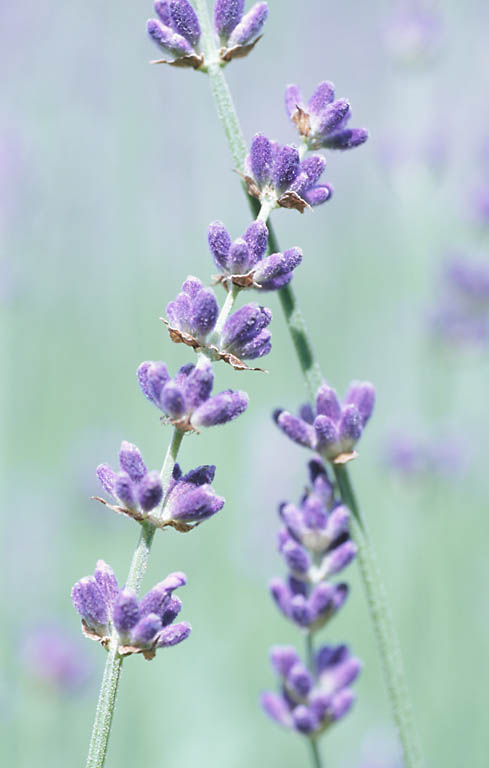The most popular lavenders fall into two groups, the English lavenders which are cultivars of Lavandula angustifolia, and the lavandins which are a hybrid between the English lavenders and another species, Lavandula latifolia.
The English or angustifolia varieties tend to bloom earlier and generally have the darkest flower colors. Munstead is a popular variety. The lavandins are generally taller, have larger flower heads, and are possibly more fragrant. Provence and Grosso are lavandins.
All lavenders are fragrant, however, dry well, and have the same basic care requirements:
Full Sun is best.
Good drainage, particularly in the winter, is a basic necessity.
The roots of lavenders will rot out if they are planted in a site that remains wet for any period of time, especially in the winter. Snow is not a problem and in fact can help protect the tops from winter winds. If your site is constantly windblown in the winter, consider placing evergreen branches around the plants to catch and hold the snow.
Enjoy your lavenders! Cut some flower heads to dry before they have totally opened. This will give the best color. Tuck some leafy sprigs into drawers and linen closets. You are likely to get a second bloom after cutting.
In the fall, do some plant shaping if needed, and in the spring prune out any dead sprigs and consider whether the height should be cut back. A light fertilizer is all that is needed. Bone meal is good.
Avoid bark mulches. Use sand or pea gravel.
If drainage is a problem, plant in a raised bed and work a gritty sand such as stone dust, or even pea stones into the soil.
